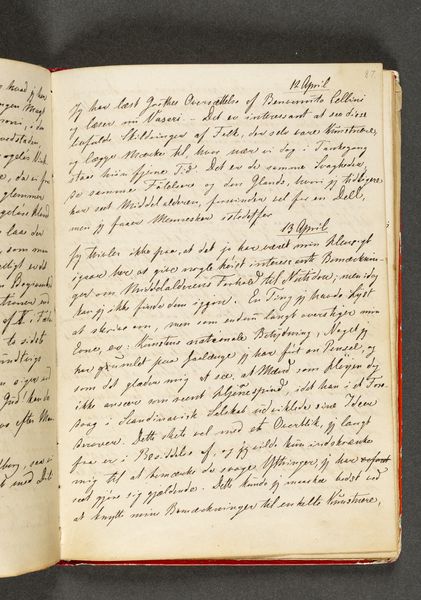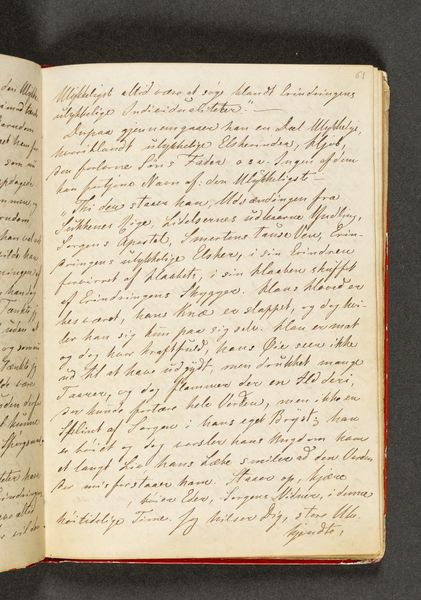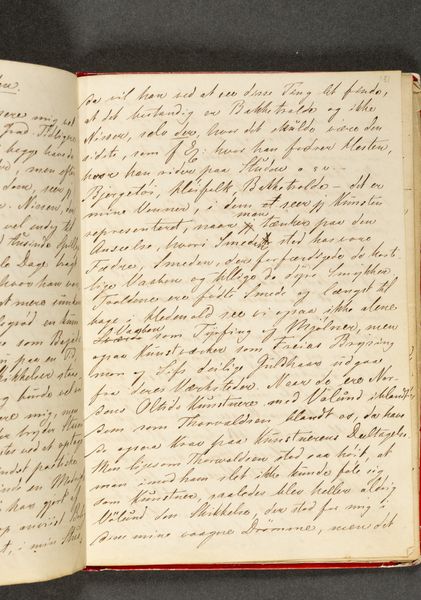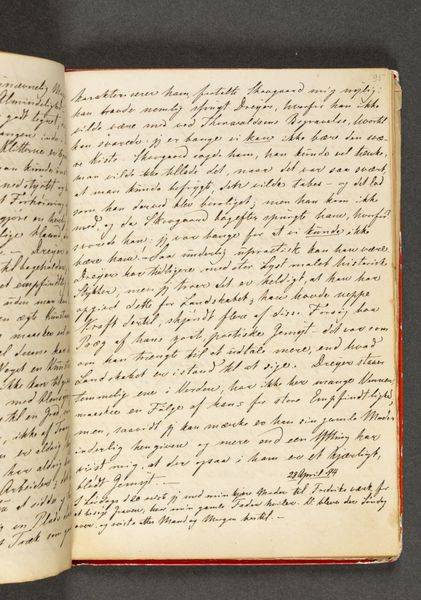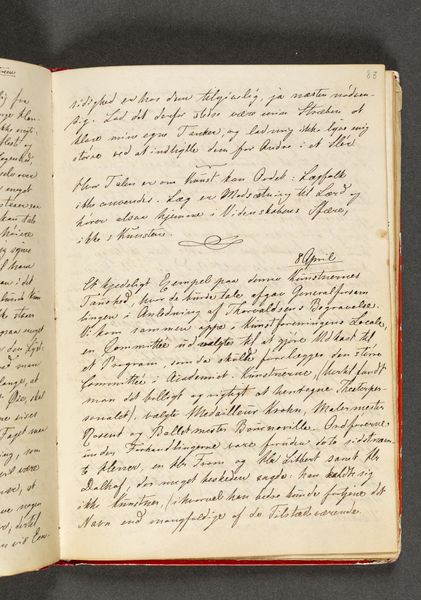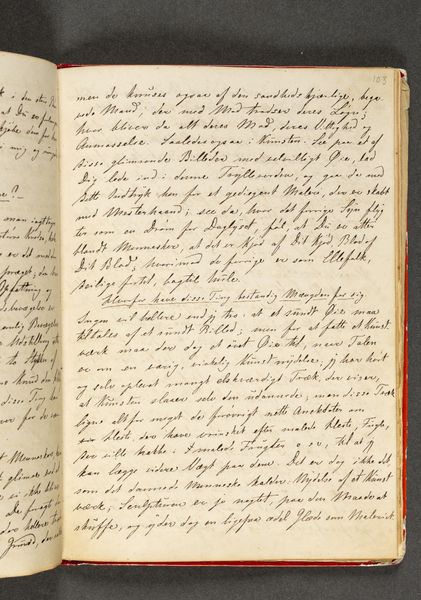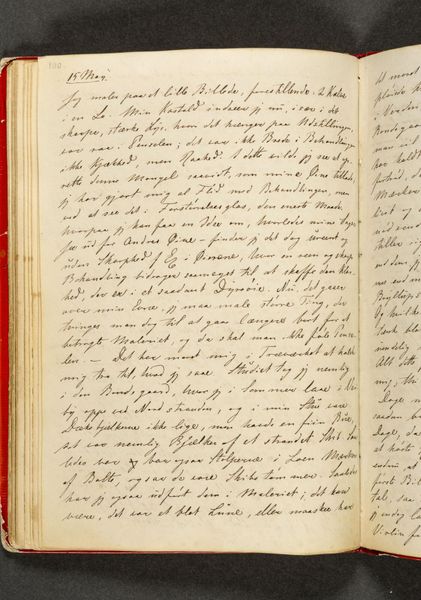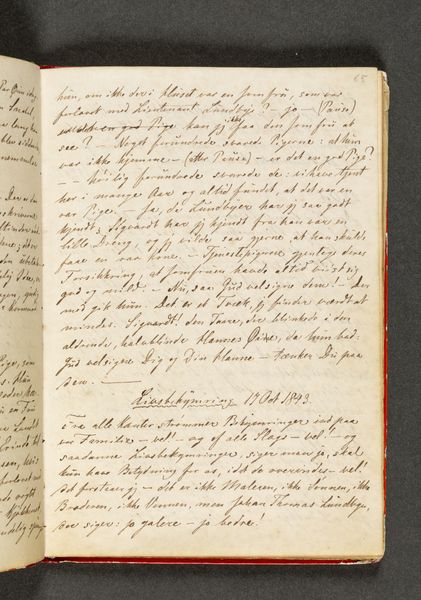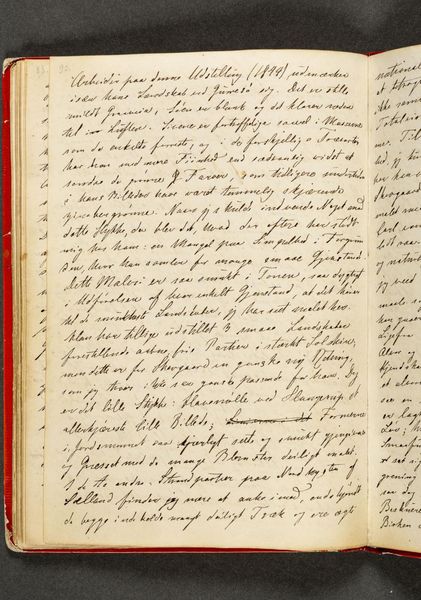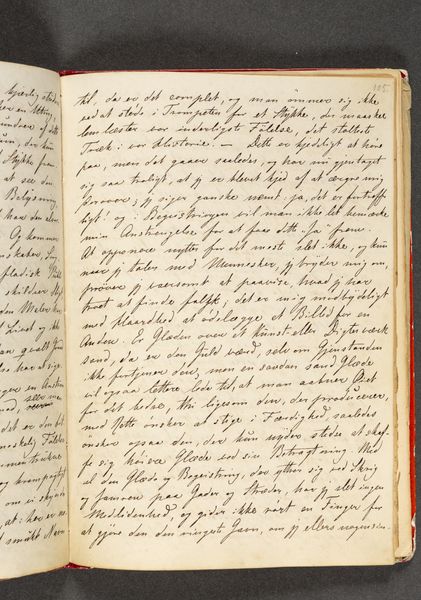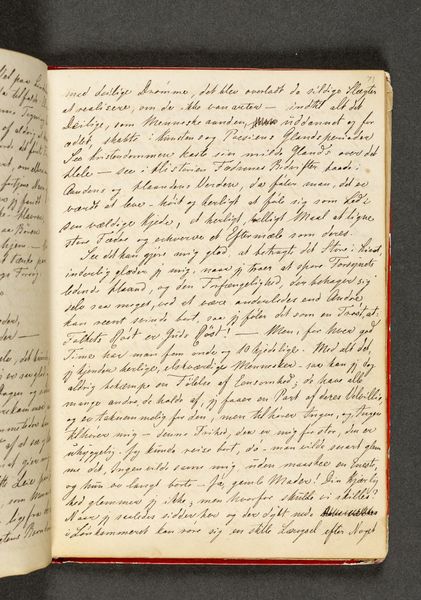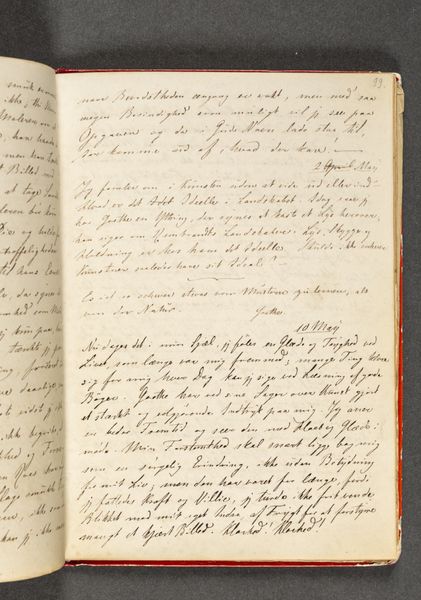
drawing
#
drawing
#
aged paper
#
book binding
#
paper non-digital material
#
sketch book
#
hardpaper
#
personal journal design
#
personal sketchbook
#
journal
#
sketchbook drawing
#
sketchbook art
Dimensions: 192 mm (height) x 133 mm (width) (bladmaal)
Curator: This work, "Dagbog. Side 85," by Johan Thomas Lundbye, created in 1844, intrigues me because it's an intimate look into an artist’s mind. We're seeing a page from a sketchbook, aged and filled with dense script. Consider the role of the personal journal in artistic practice during this period. Editor: Yes, it's interesting how something so private is now public. It almost feels intrusive to be looking at his personal notes. What sort of public function might this page have served? Curator: That's an important question. While appearing private, even something like a sketchbook page has a role to play. It served as a visual artifact reinforcing ideas around Romanticism, individualism, and the importance of personal experience. Remember that even apparent intimacy can be a carefully constructed performance for posterity. Think of the burgeoning art market in the 19th century – the market's desire to know the artist also shapes how this artwork is framed, and presented in this case in the museum space today. Editor: So, the display itself changes how we perceive this intimate, private journal? Curator: Precisely. The very act of exhibiting it elevates its status and transforms its meaning. We’re looking not just at a page from a diary, but also the construction of artistic persona. Can you tell that from the artist's selection of content and medium? Editor: I do now, seeing how even a spontaneous drawing could be shaped by a larger societal view of art and the artist’s role. Curator: And what does it make you think, about where the role of today's content creator is heading? Editor: This makes me rethink the relationship between the artist, the art, and the public. Thank you. Curator: And thank you! Thinking about how even private artistic expressions have a public dimension sheds light on the socio-cultural function of museums.
Comments
No comments
Be the first to comment and join the conversation on the ultimate creative platform.


